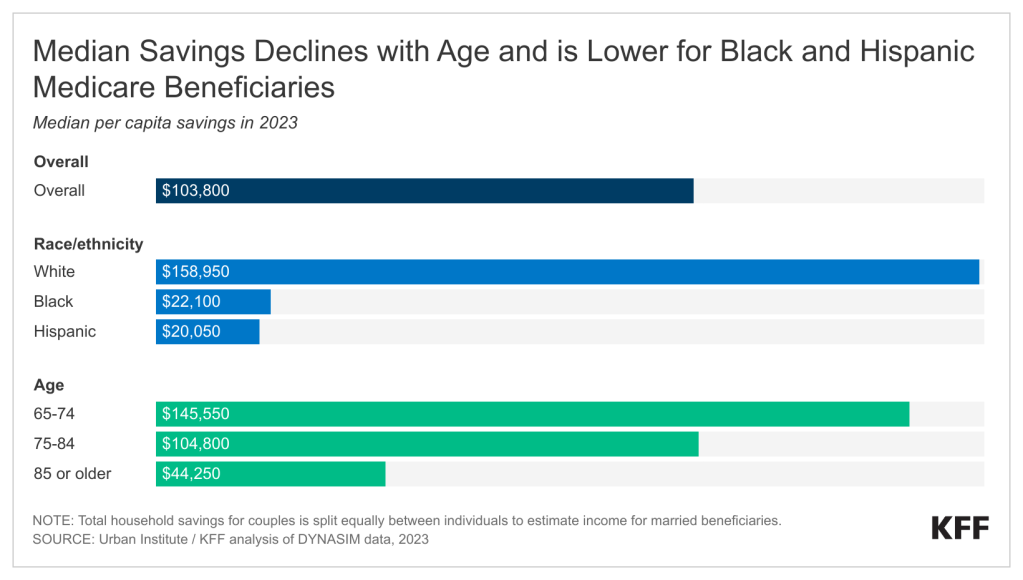
The independent source for health policy research, polling, and news.
Low Incomes, Little Savings: Many Medicare Beneficiaries Have Modest Financial Resources to Draw Upon in Retirement
A new KFF analysis shows that most Medicare beneficiaries live on relatively low incomes and have modest financial resources for retirement – posing a risk to their economic well-being, particularly if they were to have a major, unanticipated expense, such as a need for long-term nursing home care.
The financial picture is especially bleak among Black and Hispanic Medicare beneficiaries, who tend to have lower incomes, savings, and home equity than White beneficiaries, the analysis shows. Women have lower incomes and less savings than men, and beneficiaries’ income and savings tend to decline with age.
Key takeaways from the analysis include:
- Overall, 1 in 4 Medicare beneficiaries, or 16.3 million people, lived on incomes below $21,000 per person in 2023, while half (32.6 million people) lived on incomes below $36,000 per person. Median per capita income was higher among White Medicare beneficiaries ($40,750) than among Black ($27,250) or Hispanic ($19,800) beneficiaries, and lower among women than men ($33,750 vs. $38,950).
- One in 4 Medicare beneficiaries had savings below $16,950 per person in 2023, while half had savings below $103,800 per person. Ten percent of seniors had no savings at all or were in debt.
- Disparities in savings by race and ethnicity were substantial. Median savings among White beneficiaries ($158,950 per person) was more than seven times higher than among Black beneficiaries ($22,100), and more than eight times higher than among Hispanic beneficiaries ($20,050). More than one in five Black and Hispanic beneficiaries (22% and 21%) had no savings or were in debt, compared to 7% of White beneficiaries.

Having limited income and savings may prove challenging for Medicare beneficiaries as they grow older, particularly for older women, who tend to live longer than men and may be more likely to need expensive long-term services and supports. Nationally, the median annual cost of a private room in a nursing home was $108,405 in 2021 – more than the average Medicare beneficiary has in savings — and $54,000 for an assisted living facility. (Medicare does not cover such care except in limited circumstances. Some poorer beneficiaries may also qualify for Medicaid, the nation’s primary payer for nursing home care.)
The full analysis of the income, assets, and home equity of Medicare beneficiaries, overall and by age, race and ethnicity, and gender, is available on kff.org. The analysis relies on data derived from the Urban Institute’s Dynamic Simulation of Income Model (DYNASIM4) for 2023.